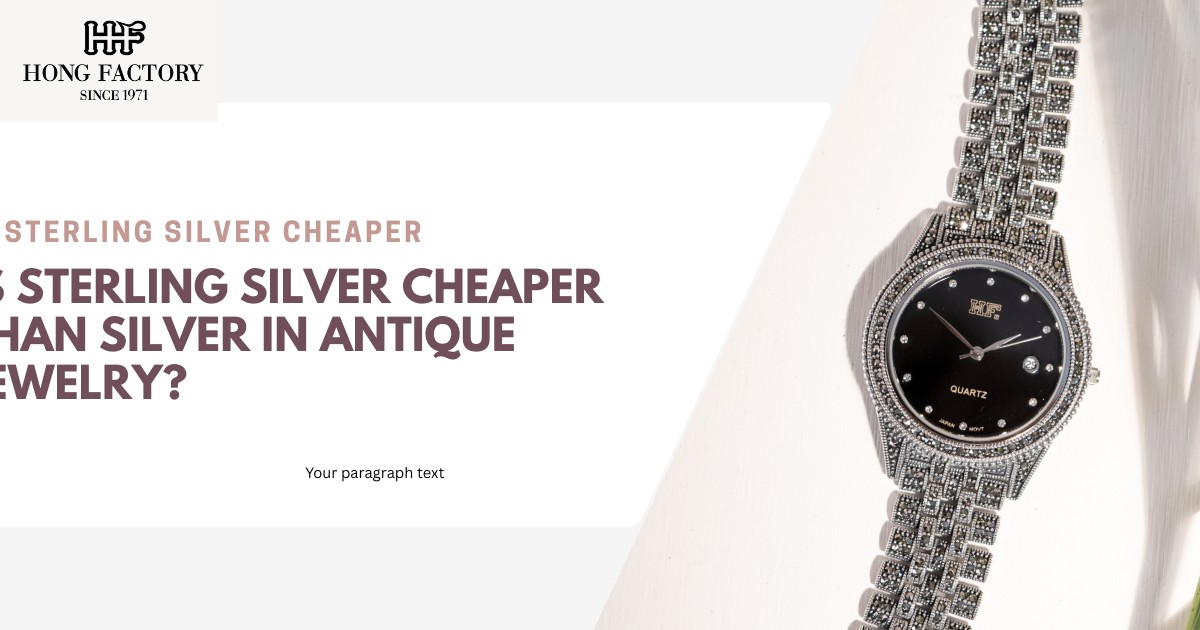
Antique jewelry holds a unique charm: every piece tells a story of history, craftsmanship, and artistry. Among antique treasures, silver jewelry stands out for its timeless beauty and cultural significance. However, when it comes to collecting or purchasing antique pieces, many wonder: is sterling silver cheaper than pure silver in the antique market? The answer depends on several factors including composition, rarity, age, and craftsmanship. marcasite jewelry
Understanding Sterling Silver and Fine Silver in Antique Jewelry
Before comparing prices, it’s essential to understand the two main types of silver used in antique jewelry. Fine silver (99.9%), also called pure silver, is softer and more malleable. It was commonly used in ceremonial or decorative items but less frequently in everyday jewelry due to its delicate nature.
Sterling silver (92.5% silver and 7.5% copper), on the other hand, became popular from the 19th century onward. It provided the perfect balance between strength and beauty, making it ideal for rings, brooches, and lockets that could withstand daily wear. This blend’s durability made it a preferred material for jewelry houses in Europe and the United States during the Victorian, Edwardian, and Art Deco eras.
Is Sterling Silver Cheaper in Antique Jewelry?
So, Is Sterling Silver Cheaper than fine silver in antique jewelry? Generally, yes but not for the reasons you might expect. While sterling silver contains less pure silver, its antique value often depends on design, craftsmanship, and provenance rather than metal purity alone.
In most cases, sterling silver jewelry is cheaper than fine silver pieces of the same weight because of its lower silver content. However, certain sterling silver antiques from famous designers or historical periods can command prices far higher than pure silver pieces. This means that while sterling silver is typically less expensive in raw material value, it can still be highly valuable as a collectible.
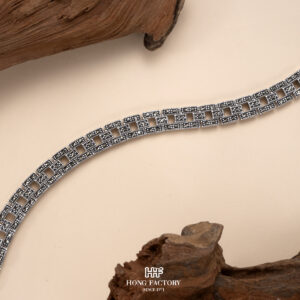
What Determines the Value of Antique Silver Jewelry
The value of antique jewelry whether sterling or pure silver depends on several factors beyond metal composition:
- Craftsmanship and Design: Intricate handwork, filigree, or repoussé techniques significantly increase an item’s value.
- Era and Style: Victorian, Edwardian, and Art Nouveau sterling silver pieces are highly sought after by collectors.
- Maker’s Mark or Origin: Silver jewelry made by renowned artisans or jewelry houses (such as Georg Jensen or Tiffany & Co.) carries premium value.
- Condition: Well-preserved antique sterling silver maintains its brilliance and structural integrity better than fine silver, which softens and warps over time.
- Rarity: Limited-edition or custom-made pieces may be worth more regardless of whether they’re sterling or fine silver.
These factors often outweigh the price difference between sterling and fine silver, especially in the antique market where historical context enhances value.
Why Sterling Silver Dominates Antique Jewelry Collections
Sterling silver was the material of choice for most 19th- and 20th-century jewelers. Its versatility allowed for detailed engraving, intricate gemstone settings, and elegant patterns that endured generations. Because of this, the majority of antique silver jewelry found today including brooches, lockets, and bangles is made of sterling silver rather than pure silver.
Its combination of durability and luster ensured that these pieces survived decades of wear while retaining their aesthetic appeal. Collectors also value sterling silver’s hallmark system, where stamps like “.925,” “Sterling,” or maker marks help authenticate the item’s origin and date.
Fine Silver in Antique Jewelry
Fine silver antique jewelry tends to be rarer, especially in wearable forms. It was used primarily in ceremonial pieces, ornate pendants, and decorative accessories rather than everyday jewelry. Its softness made it prone to bending or scratching, limiting its long-term use.
As a result, antique fine silver jewelry often appears in museum collections or among elite collectors who value purity over practicality. Because of its rarity and historical prestige, certain fine silver antiques can fetch higher prices but these are exceptions rather than the rule.
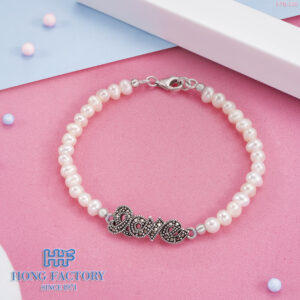
Pricing Trends in Antique Markets
When comparing sterling and fine silver in antique markets:
- Sterling silver is generally more affordable, both in material cost and resale value.
- Fine silver may command higher prices only in specific cases involving artistry or cultural importance.
For example, a sterling silver Art Deco bracelet with intricate engravings and gemstones could sell for more than a plain fine silver bangle from the same era. This shows that artistry and design hold greater influence over value than metal purity alone.
Why Collectors Love Sterling Silver Antiques
Collectors and jewelry enthusiasts often prefer sterling silver antiques because they strike the perfect balance between authenticity, beauty, and durability. Unlike fine silver, which can easily deform, sterling silver retains its shape and structure over decades. Its natural patina also adds character a feature highly prized in vintage and antique jewelry.
Moreover, sterling silver’s affordability makes it accessible to a wider range of collectors, allowing enthusiasts to own historic pieces without exorbitant cost.
Authenticity and Hallmarks
Identifying authentic antique sterling silver jewelry is key to understanding its value. Look for hallmarks such as “.925,” “STERLING,” or symbols that indicate origin and maker. British antiques, for example, often feature hallmark stamps representing the city of assay, year, and silversmith. Fine silver pieces, when marked, may display “.999” or “Fine Silver.”
Knowing these markings helps buyers distinguish between genuine antiques and reproductions, ensuring fair pricing in the market.
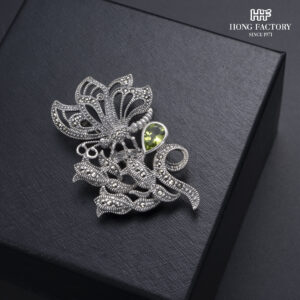
Affordable Heritage with Lasting Value
So, Is Sterling Silver Cheaper Than Silver in Antique Jewelry? Yes in terms of raw material cost, sterling silver is cheaper than fine silver. However, its true worth in the antique market often exceeds its purity, driven by artistry, history, and cultural significance.
Sterling silver antiques offer collectors an ideal blend of affordability and heritage. Their beauty lies not just in their silver content but in the craftsmanship and stories they carry through time. Whether you’re a seasoned collector or a first-time buyer, sterling silver antique jewelry remains one of the most accessible and meaningful investments in the world of vintage adornments.

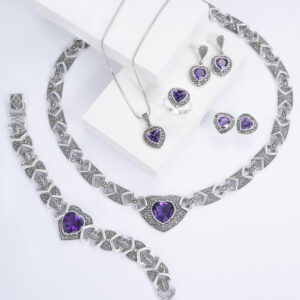
Sterling silver jewelry has been a timeless favorite for those who value elegance, versatility, and quality. Its brilliant luster and ability to complement any outfit make it perfect for daily use. However, many wonder why is sterling silver expensive for everyday wear compared to other materials? The answer lies in its purity, durability, craftsmanship, and long-term value that make it a premium choice for jewelry lovers worldwide. marcasite jewelry
What Is Sterling Silver?
Sterling silver is made up of 92.5% pure silver and 7.5% copper or other strengthening metals. This unique blend preserves silver’s natural shine while improving its hardness for daily wear. Every authentic sterling silver piece carries a hallmark usually marked “925” which verifies its quality and purity.
Unlike plated or imitation jewelry, sterling silver is a genuine precious metal. Its intrinsic value and resilience make it ideal for creating fine jewelry that lasts through daily use while maintaining its beauty.
Is Sterling Silver Expensive?
The question “Is Sterling Silver Expensive” often arises when comparing silver to base metals like stainless steel or brass. While sterling silver may cost more upfront, the higher price reflects its superior quality, craftsmanship, and longevity.
Key reasons sterling silver is expensive for everyday wear include:
- High-quality material: Sterling silver is a real precious metal with intrinsic market value.
- Durability and strength: It withstands everyday use when properly cared for.
- Skilled craftsmanship: Silver jewelry requires expert polishing and finishing.
- Versatility: Its timeless appeal works for both casual and formal styles.
- Maintenance value: Sterling silver can be easily cleaned and restored to its original brilliance.
In short, sterling silver offers both luxury and practicality, making it worth every penny for those seeking reliable, stylish jewelry for daily wear.
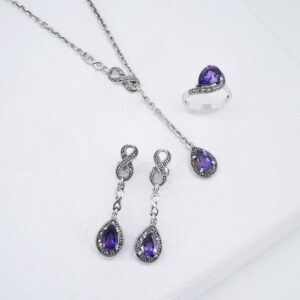
Durability and Practicality for Everyday Use
One of the primary reasons sterling silver is valued for everyday wear is its balance between strength and flexibility. The metal’s alloy composition ensures it can resist bending, denting, and scratching during regular use. Unlike pure silver, which is too soft, sterling silver retains shape and shine through years of wear.
Many jewelers also apply anti-tarnish coatings to prevent oxidation, ensuring that the jewelry remains radiant even with frequent exposure to air and moisture. This makes sterling silver perfect for rings, necklaces, and bracelets worn daily.
Comfort and Hypoallergenic Properties
Sterling silver is hypoallergenic, making it ideal for people with sensitive skin. Unlike costume jewelry, which may contain nickel or other irritants, sterling silver offers safe, irritation-free wear. This quality makes it a preferred choice for earrings, watches, and other accessories that come into direct contact with the skin.
Comfort is another reason behind its popularity. Sterling silver’s lightweight yet durable structure ensures that even larger pieces remain comfortable for all-day wear without feeling heavy or cumbersome.
Timeless Appeal and Versatility
Sterling silver never goes out of style. Its neutral tone complements all skin tones and can be paired with any outfit, from casual wear to elegant evening attire. Whether it’s a simple silver band, a pendant necklace, or detailed earrings, sterling silver effortlessly enhances both minimalist and sophisticated looks.
For those seeking daily accessories that transition seamlessly from day to night, sterling silver is the perfect choice versatile, modern, and forever stylish.
Maintenance and Longevity
Another reason sterling silver is considered a premium option for daily wear is its longevity. With simple care, it can last for decades. While it may tarnish slightly over time due to exposure to air and humidity, a quick polish restores its shine instantly.
To keep sterling silver jewelry in top condition:
- Store it in a dry, airtight pouch.
- Clean it regularly with a soft cloth.
- Avoid harsh chemicals, perfumes, or saltwater.
This easy maintenance ensures that sterling silver jewelry remains a durable investment rather than a short-lived accessory.
Comparison with Other Everyday Jewelry Metals
When choosing jewelry for daily wear, sterling silver offers a distinct advantage over cheaper metals:
- Stainless Steel: While durable, it lacks the prestige and natural luster of sterling silver.
- Brass or Alloy: Inexpensive but prone to tarnish, corrosion, and skin irritation.
- Gold-Plated Jewelry: Offers temporary shine but wears off easily over time.
Sterling silver strikes the perfect balance beautiful, affordable, and long-lasting. This is why it remains a top choice for those seeking a touch of luxury in their daily accessories.
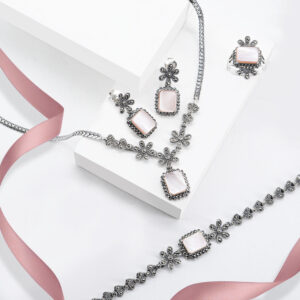
Symbol of Elegance and Investment Value
Beyond fashion, sterling silver jewelry represents quality and tradition. It’s often passed down as heirlooms, retaining both sentimental and monetary value. Because silver is a traded precious metal, its worth remains stable and can even appreciate over time.
Investing in sterling silver for everyday wear means choosing jewelry that embodies craftsmanship, sustainability, and timeless elegance all while maintaining long-term value.
Sterling silver may seem expensive compared to mass-produced or imitation jewelry, but its true value lies in its durability, comfort, and elegance. It’s a metal that combines everyday practicality with refined beauty, making it an essential part of any modern jewelry collection.
So, when you invest in sterling silver for daily wear, you’re not just buying a piece of jewelry you’re choosing quality, heritage, and timeless sophistication that can shine every day for years to come.
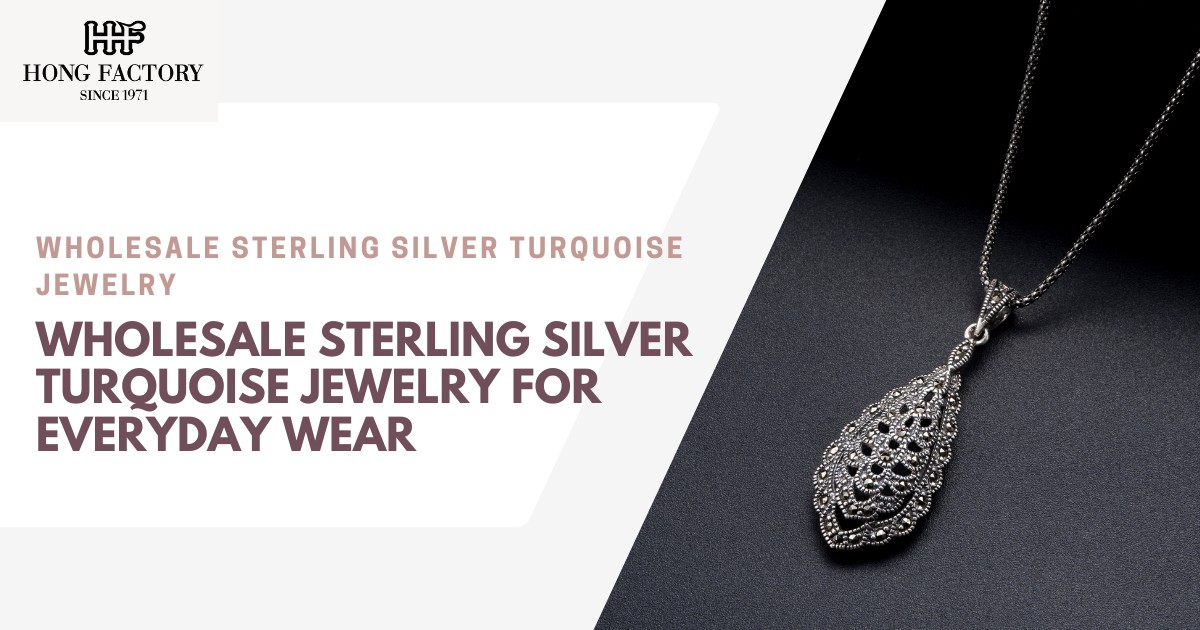

Sterling silver turquoise jewelry is admired for its vibrant beauty, cultural symbolism, and timeless charm. While many associate turquoise jewelry with bold statement pieces, it is also a perfect choice for everyday wear. Lightweight, durable, and versatile, wholesale sterling silver turquoise jewelry offers retailers and consumers an affordable way to enjoy authentic gemstone jewelry that fits seamlessly into daily life. marcasite jewelry
What is Sterling Silver?
Sterling silver is crafted from 92.5% pure silver and 7.5% copper or other metals, giving it the strength needed for everyday use without losing its brilliant shine. Authentic sterling silver jewelry is marked with a “925” hallmark, a trusted symbol of purity and quality.
When combined with turquoise, sterling silver creates jewelry that is eye-catching yet practical, suitable for both casual outfits and professional attire. Its cool silver tones paired with turquoise’s vibrant blue-green hues make it an adaptable choice for modern wardrobes.
Wholesale Sterling Silver Turquoise Jewelry
The demand for Wholesale Sterling Silver Turquoise Jewelry is steadily increasing, particularly among retailers who want to stock collections designed for everyday wear. Wholesale purchasing enables shops to offer customers a variety of designs at competitive prices, making it easier for consumers to find jewelry that suits their daily lifestyle.
Benefits for retailers include:
- Affordability: Wholesale pricing lowers costs, creating accessible luxury for everyday buyers.
- Variety: Rings, earrings, necklaces, bracelets, and anklets designed for daily use appeal to diverse customers.
- Customer loyalty: Offering durable, authentic jewelry builds long-term trust.
- Trend alignment: Everyday turquoise jewelry is in line with modern fashion’s focus on minimalism and functionality.
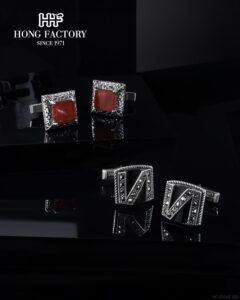
Why Turquoise is Ideal for Everyday Wear
Turquoise is not only beautiful but also meaningful. Associated with protection, healing, and positive energy, it adds depth to jewelry worn daily. Customers choose turquoise jewelry for everyday use because:
- It complements any outfit: Works equally well with casual jeans, office wear, or evening dresses.
- Lightweight comfort: Smaller turquoise pieces set in sterling silver are perfect for all-day wear.
- Unisex appeal: Both men and women appreciate turquoise for its versatile style.
- Symbolism: Wearing turquoise daily adds spiritual and emotional value beyond aesthetics.
Popular Everyday Sterling Silver Turquoise Designs
For customers seeking daily-wear jewelry, certain designs are especially popular:
- Simple turquoise stud earrings for minimalist elegance.
- Thin silver bands with turquoise accents for understated rings.
- Delicate turquoise pendant necklaces perfect for layering.
- Stackable turquoise rings for versatile, personalized looks.
- Turquoise charm bracelets that combine subtle color with casual wear.
These designs strike a balance between practicality and beauty, making them easy for customers to wear every day.
Sterling Silver vs. Costume Jewelry
Although costume jewelry may seem suitable for daily use, it often tarnishes quickly and can cause skin irritation. Sterling silver turquoise jewelry, however, is hypoallergenic, durable, and timeless. For everyday wear, sterling silver offers long-term comfort and value, making it a smarter investment for customers.
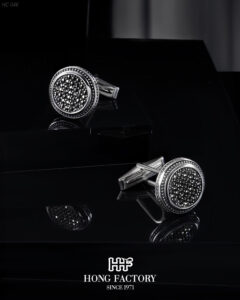
Marketing Everyday Turquoise Jewelry in Retail
Retailers can successfully promote everyday turquoise jewelry with strategies that emphasize practicality and accessibility:
- Highlight durability: Promote sterling silver as long-lasting compared to plated costume jewelry.
- Show lifestyle appeal: Display jewelry styled with everyday outfits in stores and online.
- Bundle collections: Offer sets of earrings, rings, and necklaces for daily wear packages.
- Use digital marketing: Social media campaigns featuring casual and office looks resonate with younger buyers.
- Position as gifts: Everyday jewelry is ideal for birthdays, graduations, or work-related milestones.
Wholesale sterling silver turquoise jewelry for everyday wear combines beauty, meaning, and practicality. Its versatility ensures it can be worn from day to night, while its affordability makes it accessible to a wide range of customers. For retailers, stocking these collections not only meets consumer demand but also strengthens customer loyalty.
By offering wholesale sterling silver turquoise jewelry designed for daily use, shops can expand their product lines with pieces that blend style, durability, and authentic value—making everyday fashion both elegant and affordable.

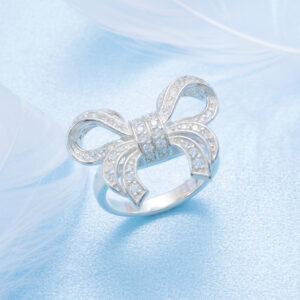
Jewelry designers constantly seek versatile, high-quality materials that allow them to transform creative visions into wearable art. Sterling silver ring mountings sourced at wholesale prices provide the ideal foundation for innovative designs. Their balance of affordability, beauty, and adaptability makes them a favorite choice for designers who want to craft unique pieces that reflect both artistry and market demand. marcasite jewelry
Understanding Designer-Focused Ring Mountings
For jewelry designers, ring mountings are more than just settings—they are blank canvases that can be customized with gemstones, textures, or engravings. Sterling silver is especially well-suited for this role because of its durability, brilliant luster, and ability to hold intricate details. Wholesale suppliers offer a wide variety of mountings, from minimalist bands to ornate frameworks, giving designers flexibility to experiment and create signature collections.
Why Designers Prefer Wholesale Mountings
Wholesale sterling silver ring mountings give designers the freedom to explore multiple styles without overwhelming costs. By sourcing in bulk, designers can test new ideas, develop prototypes, and bring collections to market more efficiently. Wholesale options also provide consistency in quality and design, which is critical when producing matching sets or cohesive collections for retail or exhibitions. Lower costs mean more creative freedom and higher profit potential.
Sterling Silver Ring Appeal
Sterling Silver Ring: A Designer’s Creative Canvas
The Sterling Silver Ring is cherished by designers worldwide for its adaptability. As a neutral-toned metal, sterling silver complements all gemstones, from diamonds to semi-precious stones. Designers can use it to create classic, contemporary, or avant-garde styles. Its affordability allows for experimentation without the financial risks associated with more expensive metals like gold or platinum, making it the perfect base for creative exploration.
Versatility in Designer Collections
Wholesale sterling silver mountings allow designers to craft diverse collections tailored to different audiences. From elegant bridal jewelry to bold fashion-forward pieces, sterling silver adapts seamlessly to varied design concepts. Designers can also use sterling silver mountings for customized orders, offering clients personalized creations such as engraved wedding bands or rings featuring unique gemstone arrangements.
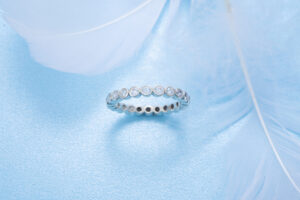
Craftsmanship and Artistic Detail
Jewelry designers value mountings that reflect high standards of craftsmanship. Wholesale sterling silver mountings are crafted with precision, ensuring secure stone settings, balanced proportions, and polished finishes. These qualities provide a reliable starting point for designers to add their artistry, whether through hand-setting gemstones, adding intricate engravings, or experimenting with modern finishes like matte or hammered textures.
Wholesale Benefits for Designers
Sourcing wholesale sterling silver mountings simplifies the creative process for designers. It ensures access to a broad inventory of base designs that can be customized for clients or collections. Wholesale pricing reduces material costs, enabling designers to reinvest in other aspects of their craft, such as marketing, gemstone sourcing, or attending trade shows. With wholesale support, designers can scale their work while maintaining originality and quality.
Meeting Client Expectations
Clients increasingly look for jewelry that reflects individuality and personal expression. By working with wholesale sterling silver mountings, designers can deliver custom pieces at accessible prices. Whether crafting engagement rings, fashion accessories, or collectible art jewelry, sterling silver ensures clients receive high-quality designs that balance beauty with affordability. This responsiveness to client needs enhances trust and loyalty.
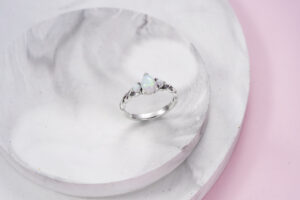
Sustainability and Designer Values
Today’s designers are mindful of sustainability and ethical practices. Sterling silver, often recycled and refined, aligns perfectly with eco-conscious values. By promoting sustainable sterling silver jewelry, designers can appeal to environmentally aware clients while reinforcing their brand identity as responsible creators. This adds both artistic and ethical value to their work.
Wholesale sterling silver ring mountings provide jewelry designers with the creative foundation needed to produce unique, elegant, and market-ready pieces. Their affordability, adaptability, and enduring charm make them indispensable for any designer’s toolkit. By sourcing from trusted wholesalers, designers can transform mountings into custom creations that reflect artistry, individuality, and craftsmanship. Every Sterling Silver Ring crafted by a designer becomes a wearable expression of style, creativity, and timeless beauty.
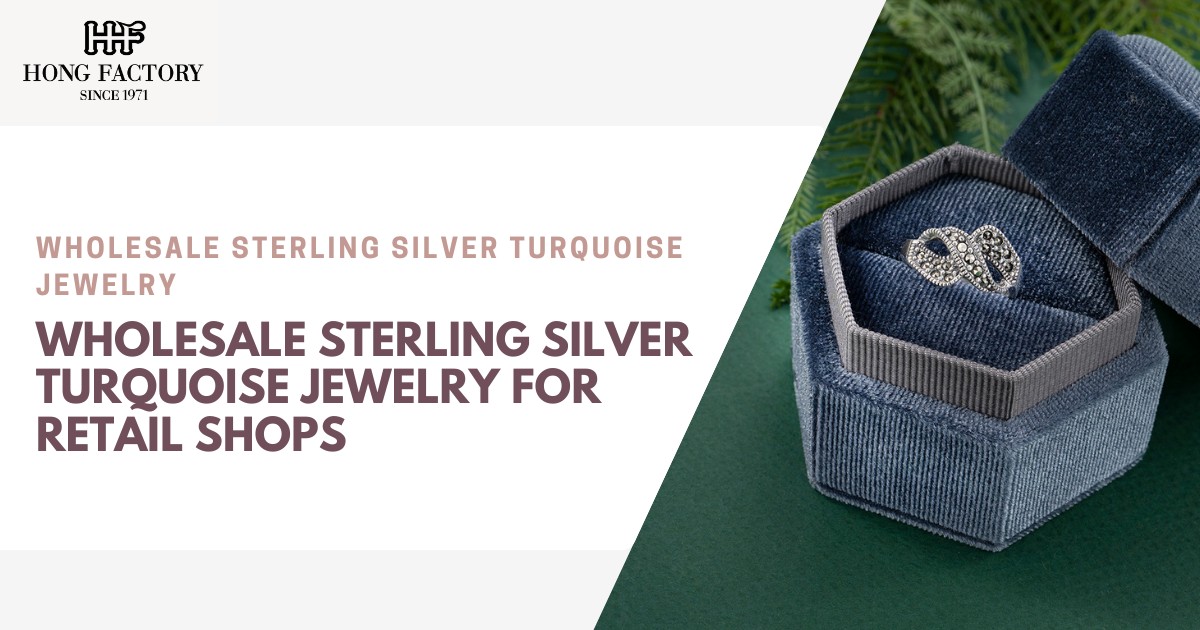
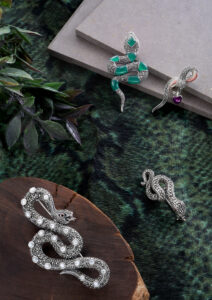
Sterling silver turquoise jewelry has become one of the most profitable and stylish options for retail shops looking to expand their collections. Combining the timeless shine of sterling silver with the vibrant hues of turquoise, these pieces deliver both cultural significance and modern fashion appeal. For retailers aiming to attract a wide variety of customers, investing in wholesale sterling silver turquoise jewelry ensures they can offer affordable yet high-quality products that resonate with today’s market. marcasite jewelry
What is Sterling Silver?
Sterling silver is made of 92.5% pure silver and 7.5% copper or other metals. This blend enhances durability while maintaining the natural brilliance of silver. Authentic pieces are typically marked with a “925” stamp, a hallmark that assures quality and purity.
Its versatility and resilience make sterling silver a favorite material among jewelers. When paired with gemstones like turquoise, it creates striking jewelry that balances elegance with bold color.
Wholesale Sterling Silver Turquoise Jewelry
The demand for Wholesale Sterling Silver Turquoise Jewelry continues to grow as both consumers and retailers recognize its value. Purchasing in bulk allows retail shops to access a wide variety of designs at lower prices, while customers benefit from affordable access to authentic gemstone jewelry.
Key advantages include:
- Affordability: Wholesale pricing makes it easier for retailers to maintain good margins while offering reasonable prices to customers.
- Variety: Rings, earrings, necklaces, pendants, and bracelets in turquoise set with sterling silver cater to diverse tastes.
- Cultural symbolism: Turquoise is often associated with protection, healing, and good fortune, enhancing its appeal.
- Durability: Unlike costume jewelry, sterling silver turquoise pieces can last for decades with proper care.
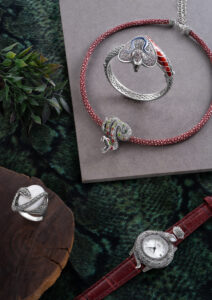
Why Turquoise Stands Out in Retail
Turquoise is one of the oldest gemstones known to mankind, treasured for its vivid blue-green color and spiritual significance. In combination with sterling silver, it creates jewelry that appeals to multiple markets.
Why customers love turquoise in silver settings:
- Its vibrant tones match both casual and formal styles.
- It has unisex appeal, making it popular for men’s and women’s designs alike.
- It carries a timeless quality, remaining fashionable across generations.
- It serves as a meaningful gift, thanks to its cultural symbolism.
Sterling Silver vs. Costume Jewelry in Retail
Retail shops often face a choice between stocking costume jewelry or investing in genuine sterling silver. While costume jewelry may attract buyers initially due to low prices, it often tarnishes, breaks easily, or causes skin irritation. Sterling silver turquoise jewelry, on the other hand, offers true precious metal value, hypoallergenic properties, and long-term wearability. This reliability helps retailers build stronger customer loyalty.
Marketing Wholesale Sterling Silver Turquoise Jewelry
To maximize sales potential, retailers should adopt effective strategies to market their wholesale turquoise jewelry collections:
- Highlight authenticity: Emphasize the 925 hallmark and genuine turquoise gemstones.
- Leverage storytelling: Share the historical and cultural symbolism of turquoise in marketing materials.
- Use creative displays: Showcase turquoise pieces under bright lighting to enhance their vivid color.
- Promote online: Use e-commerce platforms and social media campaigns to reach wider audiences.
- Offer styling ideas: Suggest how turquoise jewelry can be paired with everyday outfits or special occasions.
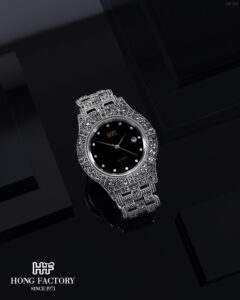
Customer Appeal of Sterling Silver Turquoise Jewelry
Modern customers appreciate jewelry that combines fashion, meaning, and value. Sterling silver turquoise jewelry meets these demands by offering:
- Affordability with quality: Customers can enjoy authentic jewelry without overspending.
- Trendy yet timeless designs: Turquoise remains fashionable across different styles and age groups.
- Emotional value: The gemstone’s symbolism adds depth to every piece.
- Investment potential: Unlike disposable accessories, sterling silver turquoise jewelry can be treasured for years.
Wholesale sterling silver turquoise jewelry is not only a smart business investment for retail shops but also a stylish and meaningful option for customers. By offering authentic, durable, and beautifully designed pieces, retailers can attract a loyal customer base that values both affordability and quality.
In an era where shoppers want jewelry that reflects both personality and practicality, sterling silver turquoise designs stand out. For retail shops, embracing wholesale sterling silver turquoise jewelry ensures long-term growth, customer satisfaction, and consistent sales.
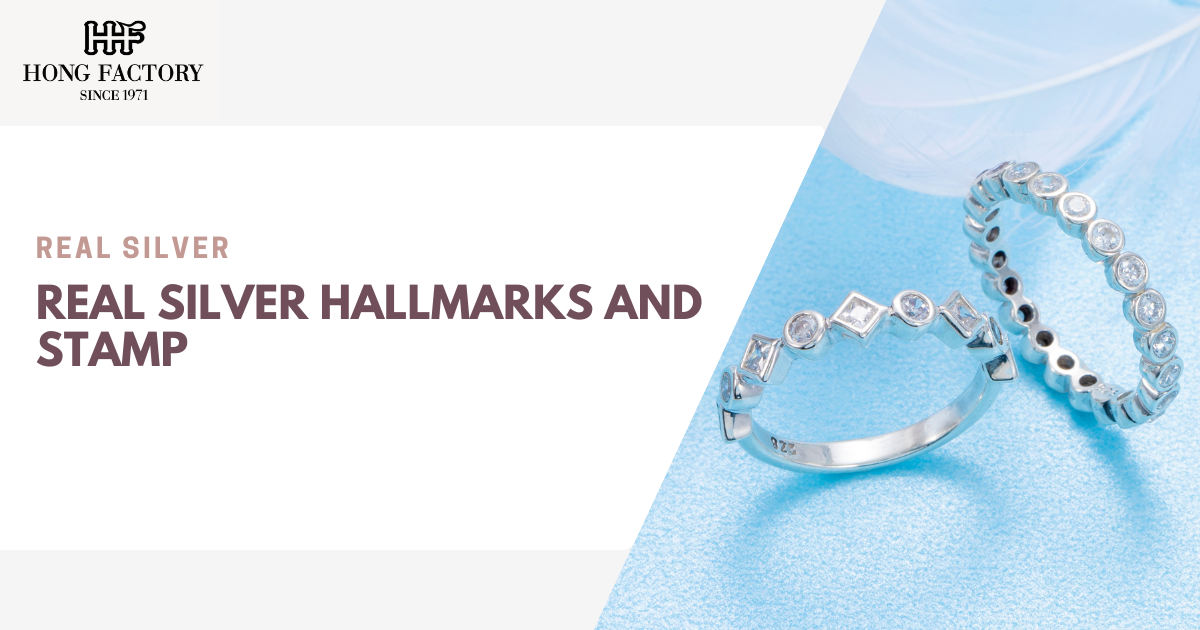
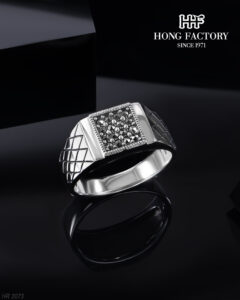
Silver has always been admired for its timeless shine, durability, and value. When shopping for jewelry, coins, or decorative pieces, one of the most reliable ways to confirm authenticity is by checking for hallmarks and stamps. These small markings give valuable information about the purity and origin of silver items. Understanding real silver hallmarks and stamps ensures that you can confidently identify genuine pieces and avoid imitations. marcasite jewelry
What Are Hallmarks in Real Silver?
A hallmark is a mark or stamp applied to silver to certify its authenticity and purity. These marks are usually engraved or pressed onto the surface of silver items. They serve as proof that the item meets specific standards set by governing authorities or manufacturers.
Hallmarks are not just decorative—they are essential indicators of the silver’s composition, quality, and sometimes even its country of origin.
Common Hallmarks Found on Real Silver
When inspecting silver items, you may come across different types of stamps. The most common include:
- .999 or Fine Silver: Indicates 99.9% pure silver. Soft and not ideal for daily wear jewelry but highly valuable.
- .925 or Sterling: Refers to sterling silver, which is 92.5% silver and 7.5% copper or other metals. It is durable and the most popular type for jewelry.
- Coin Silver (90%): Historically used in coins, this stamp reflects 90% silver content.
- Maker’s Mark: Identifies the manufacturer or brand that created the piece.
- Assay Office Mark: In some countries, official assay offices test and certify silver purity, applying their unique symbols.
These hallmarks give buyers confidence that the item is indeed made from real silver.
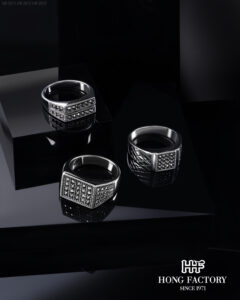
Why Real Silver Stamps Matter
Hallmarks and stamps on real silver are important for several reasons:
- Authentication: They provide proof that the item is genuine and not just silver-plated.
- Purity Verification: Marks such as .925 or .999 indicate exactly how much silver the item contains.
- Value Determination: Higher purity levels generally mean higher value, making hallmarks useful for appraisals.
- Trust and Transparency: Buyers can trust that they are getting what they pay for when the piece is properly stamped.
Identifying Real Silver Through Stamps
If you want to ensure your silver jewelry or collectibles are authentic, follow these steps:
- Look Closely for Stamps: Use a magnifying glass to spot small hallmarks, often on clasps, backs of pendants, or inside rings.
- Check Purity Numbers: Ensure the piece is marked with .925, .999, or another recognized purity level.
- Verify Country Symbols: In some regions, like the UK, hallmarks may include lions, crowns, or date letters.
- Confirm with Professionals: A jeweler can validate hallmarks and perform tests to verify silver content.
Fake or Misleading Stamps
Unfortunately, not all stamps guarantee authenticity. Some counterfeit items include false hallmarks to deceive buyers. For this reason, it is important to:
- Buy from Trusted Sellers: Reputable jewelers and dealers are less likely to sell fake pieces.
- Cross-Check Marks: Learn to recognize standard marks from specific countries.
- Perform Additional Tests: Use magnet tests, acid tests, or professional verification to confirm authenticity.
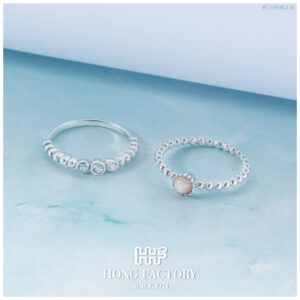
Caring for Stamped Real Silver
Once you have verified your item is genuine, proper care will maintain both its beauty and its stamped markings:
- Clean Gently: Avoid harsh scrubbing that could wear down hallmark impressions.
- Store Carefully: Keep silver in anti-tarnish bags to prevent oxidation.
- Handle With Care: Excessive polishing may fade markings over time, so polish gently.
Real silver hallmarks and stamps play an essential role in verifying authenticity, purity, and value. Whether you are buying jewelry, coins, or antiques, always check for hallmarks like .925 or .999. Understanding what these stamps mean helps you avoid counterfeits and make informed purchases. By recognizing and respecting these tiny yet powerful marks, you can ensure your silver collection remains genuine, valuable, and timeless.

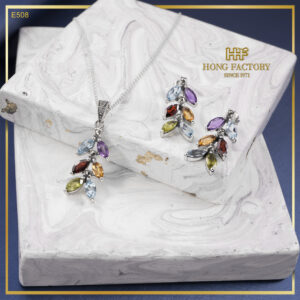
Birthstones carry symbolic meaning and beauty, making them cherished across cultures and generations. For December, the turquoise birthstone is one of the most popular and historically significant choices. Known for its stunning blue-green hues and protective qualities, turquoise has been valued for centuries in jewellery, art, and cultural traditions. This article explores the history, symbolism, and modern relevance of the turquoise birthstone. marcasite jewelry
The History of Turquoise Birthstone
Turquoise is one of the oldest gemstones known to humanity, with origins tracing back thousands of years. Ancient Egyptians used it in jewelry and burial ornaments, while Native American tribes crafted turquoise into amulets and ceremonial pieces. In Persia (modern-day Iran), turquoise was considered a symbol of protection and prosperity. Its long-standing presence in history highlights its deep spiritual and cultural value.
The Symbolism of Turquoise Birthstone
The turquoise birthstone has been linked to numerous symbolic meanings:
- Protection: Believed to guard against negative energy and accidents.
- Healing: Associated with physical and emotional well-being.
- Wisdom and Truth: Thought to promote honest communication and clear thinking.
- Friendship and Love: Often gifted as a token of loyalty and strong relationships.
These associations make turquoise a meaningful gift for December-born individuals or anyone who appreciates its protective aura.
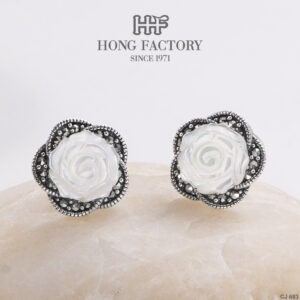
Physical Characteristics of Turquoise
Turquoise is known for its unique blue-to-green color, often with dark veins or patterns called “matrix.” Its vibrant hues depend on the mineral composition of its origin. Ranking 5 to 6 on the Mohs scale of hardness, turquoise is softer than many gemstones, which means it requires extra care to maintain its brilliance.
Why Turquoise Jewellery is Popular
Turquoise jewellery continues to be fashionable worldwide for several reasons:
- Distinctive Color: Its rare blue-green tone stands out in any design.
- Cultural Heritage: Worn for centuries as a talisman of protection and luck.
- Versatility: Pairs beautifully with both silver and gold settings.
- Affordability: More accessible compared to luxury gemstones like sapphires or diamonds.
Caring for Turquoise Jewellery
Because turquoise is softer than many gemstones, it requires gentle handling:
- Avoid Chemicals: Keep away from perfumes, oils, and cleaning agents.
- Limit Sun Exposure: Prolonged sunlight may cause color fading.
- Clean Gently: Wipe with a soft, damp cloth—avoid harsh cleaners.
- Store Carefully: Keep separately in a soft pouch to prevent scratches.
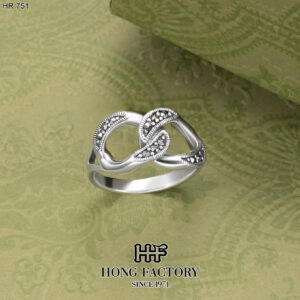
Turquoise in Modern Fashion and Lifestyle
The turquoise birthstone remains relevant in modern fashion and lifestyle:
- Statement Pieces: Large turquoise pendants and rings remain popular in bohemian and contemporary designs.
- Cultural Jewellery: Native American and Southwestern jewellery styles continue to celebrate turquoise craftsmanship.
- Wellness Practices: Some believe turquoise promotes calmness and emotional balance, making it popular in meditation spaces.
The turquoise birthstone is more than just a December gem—it represents protection, wisdom, and enduring beauty. Its striking color and symbolic depth make it a timeless choice for jewellery and personal adornment. Whether given as a birthday gift, worn for its spiritual meaning, or styled for fashion, turquoise continues to shine as a gemstone that bridges ancient traditions with modern elegance.

When it comes to fine jewelry, few pieces combine tradition, elegance, and versatility as well as a gold brooch. But not all gold is created equal—purity levels vary and can significantly affect durability, appearance, and value. For many buyers and collectors, the 18k gold brooch strikes the perfect balance between quality and practicality, making it the preferred choice over 14k or 24k options. marcasite jewelry
Understanding Gold Purity Levels
Gold jewelry is typically made by mixing pure gold with other metals such as copper, silver, or nickel to improve strength and durability. The karat system measures the proportion of pure gold in a piece:
- 24k gold: 99.9% pure gold, very soft and prone to scratches or bending.
- 18k gold: 75% pure gold, with 25% alloy metals to enhance durability.
- 14k gold: 58.3% pure gold, stronger but with less of the rich golden color.
Each level has advantages, but 18k often provides the best of both worlds—luxury and wearability.
Why Choose an 18k Gold Brooch
The 18k Gold Brooch offers a balance between beauty and functionality. Unlike 24k gold, which can be too soft for detailed designs, 18k provides enough durability to hold intricate patterns while retaining the rich, warm glow of high-purity gold. Compared to 14k, it has a deeper, more luxurious color that makes brooches look elegant and timeless.
Durability and Wearability
An 18k gold brooch is durable enough for regular wear while still showcasing the beauty of fine gold. Its alloyed metals make it resistant to scratches and bending, unlike softer 24k gold. While 14k may be slightly more resistant to wear, 18k maintains a better balance of strength and luxury, ensuring longevity without compromising aesthetics.
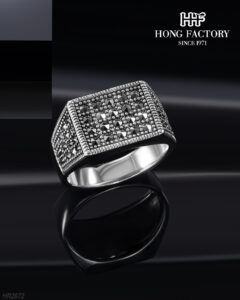
Aesthetic Appeal of 18k Gold
The appeal of 18k gold lies in its warm, radiant color. It captures the rich yellow hue associated with pure gold while maintaining structural integrity. Brooches made in 18k gold often appear more refined and prestigious, making them suitable for both everyday elegance and formal occasions.
Value and Investment
From an investment perspective, 18k gold jewelry often holds higher resale value than 14k due to its greater gold content. While 24k contains the most gold, its softness makes it impractical for jewelry, reducing its desirability for wearable designs. An 18k gold brooch, therefore, represents both financial value and long-lasting beauty.
Design Versatility
Jewelers often prefer working with 18k gold because it allows for more detailed and creative designs. Brooches can feature intricate engravings, gemstone settings, or artistic shapes without the risk of distortion. This makes 18k gold brooches highly versatile for both classic and modern jewelry trends.
When to Choose 14k or 24k Instead
While 18k is often the best choice, there are times when 14k or 24k may be preferable. 14k gold is ideal for those who want a stronger, more affordable option for daily wear. 24k, while not practical for intricate brooches, may appeal to collectors who value purity and cultural significance over durability.

Caring for an 18k Gold Brooch
To maintain its brilliance, an 18k gold brooch should be cleaned regularly with a soft cloth and stored separately to avoid scratches. Avoid exposure to harsh chemicals, perfumes, or abrasive surfaces. With proper care, an 18k brooch can last for generations, making it a meaningful heirloom.
Choosing an 18k gold brooch over 14k or 24k means selecting a piece that balances beauty, strength, and long-term value. With its luxurious color, durability, and versatility, 18k gold offers the perfect compromise between practicality and prestige. Whether gifted for a special occasion or added to a personal collection, an 18k gold brooch is a timeless piece that embodies elegance and sophistication.
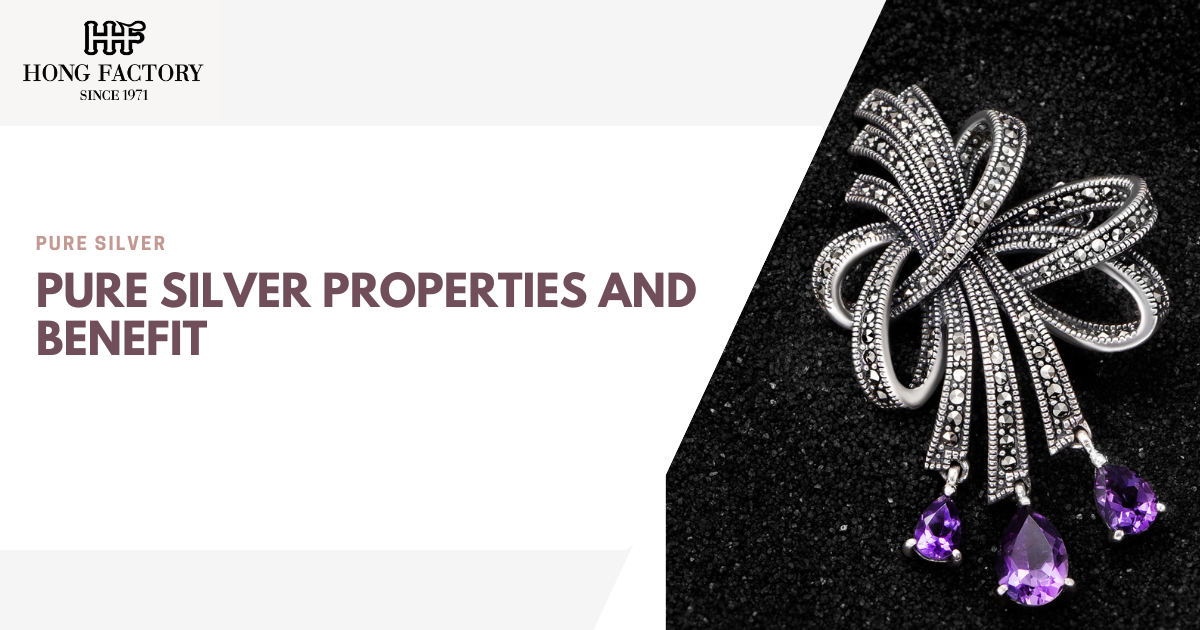
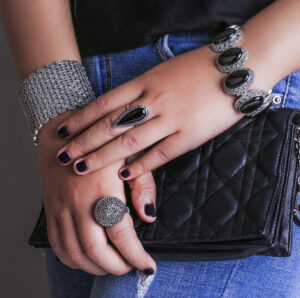
Silver is one of the most recognized precious metals in the world, valued for its beauty, versatility, and cultural significance. Among the various types, Pure silver stands out because of its exceptional purity and unique qualities. Understanding the properties and benefits of pure silver helps consumers, collectors, and investors appreciate why it has remained relevant for centuries. This article explores the characteristics of pure silver and the advantages it offers. marcasite jewelry
What is Pure Silver?
Pure silver, also called fine silver, consists of 99.9% silver with only trace amounts of other elements. This nearly complete purity gives it distinct characteristics:
- A natural, brilliant white shine
- Hypoallergenic qualities, making it safe for sensitive skin
- High malleability, allowing artisans to shape it easily
- Prestige as one of the purest forms of precious metals
Because of these features, pure silver is admired both for its aesthetic value and its authenticity.
Pure Silver Properties
Pure silver perception
When people hear the term Pure silver, they often associate it with high quality and value. Its notable properties include:
- Softness: Pure silver is softer compared to sterling silver, making it more prone to scratches or bending.
- Conductivity: Silver is one of the best conductors of heat and electricity.
- Tarnish Resistance: Pure silver is slightly less prone to tarnishing than sterling silver, though it still requires care.
- Shine and Aesthetic Appeal: Its natural brightness is unmatched, making it popular for decorative and collectible items.
These unique properties explain why pure silver is used in a wide range of industries beyond jewelry.
Benefits of Pure Silver
The benefits of pure silver extend across multiple areas:
- Hypoallergenic Jewelry: Perfect for individuals with sensitive skin, as it rarely causes irritation.
- Investment Value: Pure silver holds intrinsic worth and is often purchased in the form of coins, bars, or bullion.
- Industrial Uses: Widely applied in electronics, solar panels, and medical equipment due to its conductivity and antibacterial qualities.
- Collectibility: Highly valued by collectors for its authenticity and rarity.
These benefits make pure silver versatile and highly desirable worldwide.

Pure Silver in Jewelry
Although less common than sterling silver in everyday wear, pure silver still plays a role in jewelry:
- Lightweight earrings and pendants
- Minimalist designs that don’t require high durability
- Special edition or collectible pieces
While it may not be as durable as sterling silver, its purity makes it appealing to consumers who prioritize authenticity.
Pure Silver vs Sterling Silver
The key difference between pure silver and sterling silver lies in composition:
- Pure Silver: 99.9% silver, softer and better for collectibles.
- Sterling Silver: 92.5% silver mixed with alloys, stronger and ideal for everyday jewelry.
This distinction helps buyers decide whether they want higher purity or greater durability.
Caring for Pure Silver
To preserve pure silver’s properties and benefits:
- Store in anti-tarnish pouches or cases
- Clean gently with a polishing cloth
- Avoid harsh chemicals and moisture
- Handle carefully to prevent scratches or bending
Proper care ensures that pure silver items maintain their brilliance and value over time.

Pros and Cons of Pure Silver
Pros:
- Exceptional purity and brilliance
- Hypoallergenic and skin-friendly
- High intrinsic and collectible value
- Useful in jewelry, investment, and industry
Cons:
- Softer and less durable than sterling silver
- Higher cost compared to alloyed options
- Requires careful maintenance
Pure silver remains one of the most admired and valuable precious metals in the world. Its properties, including its brilliance, purity, and hypoallergenic qualities, make it a prized material for jewelry, collectibles, and industrial applications. While it may be softer and less durable than sterling silver, the benefits of Pure silver from investment potential to cultural significance ensure it continues to play a vital role in both fashion and industry. Its timeless appeal makes pure silver a lasting and meaningful choice.

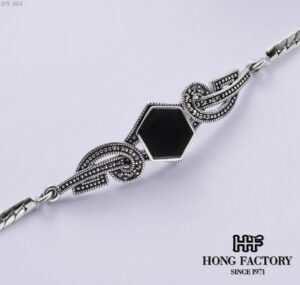
For centuries, sterling silver has been admired not only as a material for jewelry but also as a collector’s treasure. Its balance of elegance, durability, and historical value makes it highly sought after by enthusiasts worldwide. While some may argue that Sterling silver expensive jewelry pieces are overpriced, collectors understand that rarity, artistry, and heritage are what truly define their worth. This article explores why sterling silver is cherished by collectors and how it continues to serve as both a fashion statement and a long-term investment. marcasite jewelry
The Appeal of Collecting Sterling Silver
Sterling silver, composed of 92.5% pure silver and 7.5% alloy metals, is a perfect blend of beauty and resilience. Collectors are drawn to sterling silver pieces because:
- They hold cultural and historical significance
- Each design often reflects artistry and heritage
- They are versatile and timeless in style
- Sterling silver retains long-term value
This unique combination makes sterling silver pieces ideal for those who see jewelry as more than just adornment.
Sterling Silver Expensive but Worth Collecting
Sterling silver expensive perception
The idea of Sterling silver expensive jewelry may discourage casual buyers, but collectors recognize the factors that justify the cost:
- Intricate craftsmanship and handmade detailing
- Limited-edition designs and rare collections
- Intrinsic silver value that contributes to long-term investment
- Emotional and cultural significance tied to certain pieces
For collectors, the expense is not just about owning silver it’s about preserving art and history.
Traditional and Artistic Value
Collectors often seek sterling silver pieces that carry a traditional touch or artistic uniqueness:
- Vintage Designs: Jewelry crafted in earlier centuries retains nostalgic and historical importance.
- Cultural Motifs: Patterns inspired by heritage, folklore, or symbolism connect wearers to tradition.
- Handcrafted Artistry: Each handmade piece is one-of-a-kind, adding exclusivity.
These aspects elevate sterling silver jewelry beyond fashion, making it a collectible art form.
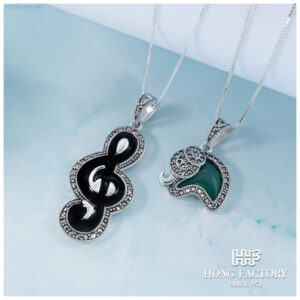
Durability and Longevity
Sterling silver’s strength makes it perfect for collectors who want heirloom-quality items:
- Withstands daily wear when properly cared for
- Retains shine and elegance for decades
- Becomes even more valuable as it ages with a patina finish
This durability ensures that sterling silver collections last for generations.
Sterling Silver vs Other Collectibles
Compared to other jewelry or collectible items:
- Plated Jewelry: Affordable but lacks long-term value
- Stainless Steel: Durable but does not carry cultural prestige
- Gold and Platinum: Highly valuable but often less accessible due to high cost
Sterling silver provides the perfect balance of value, artistry, and accessibility for collectors.
Investment Potential
Collecting sterling silver is not just about aesthetics it is also financially rewarding:
- Retains intrinsic value due to silver content
- Rare or limited-edition pieces appreciate over time
- Highly liquid, as silver remains in demand globally
This investment potential makes sterling silver a smart choice for serious collectors.
Caring for a Sterling Silver Collection
To maintain value and beauty, collectors take special care of their pieces:
- Store in anti-tarnish pouches or cloths
- Clean regularly with a polishing cloth
- Avoid exposure to harsh chemicals or high humidity
With proper care, a sterling silver collection can remain flawless for decades.

Why Collectors Choose Sterling Silver
Collectors are drawn to sterling silver because it represents:
- A link to history and culture
- Timeless designs that never go out of style
- Investment-worthy pieces that increase in value
- Jewelry that can be passed down as cherished heirlooms
Sterling silver expensive pieces are not simply jewelry items they are symbols of heritage, craftsmanship, and investment potential. For collectors, the expense reflects not just the material but the artistry, history, and emotion tied to each piece. In the world of collectibles, sterling silver remains one of the most accessible yet prestigious options, proving its place as both a stylish choice and a long-term treasure.



